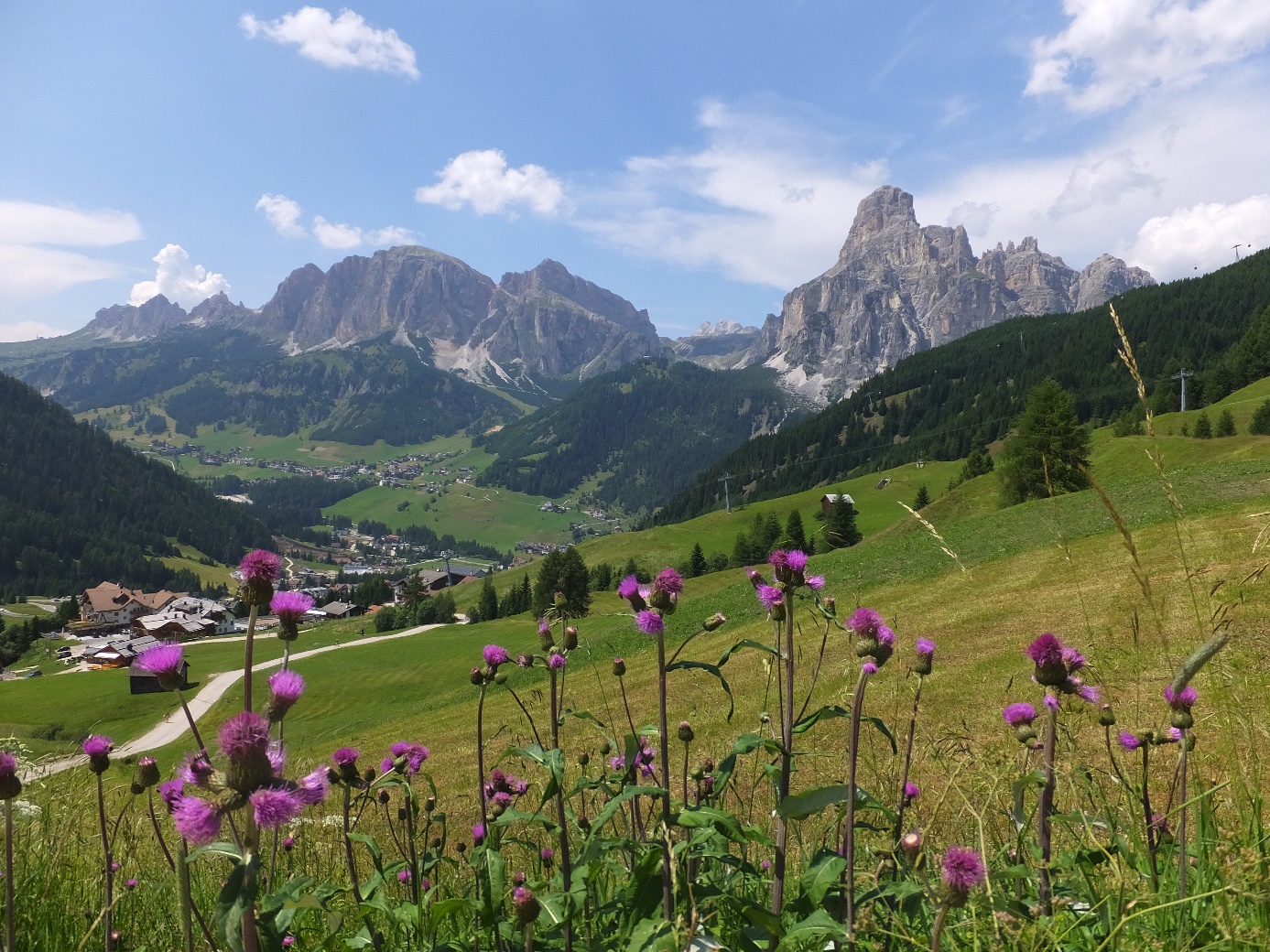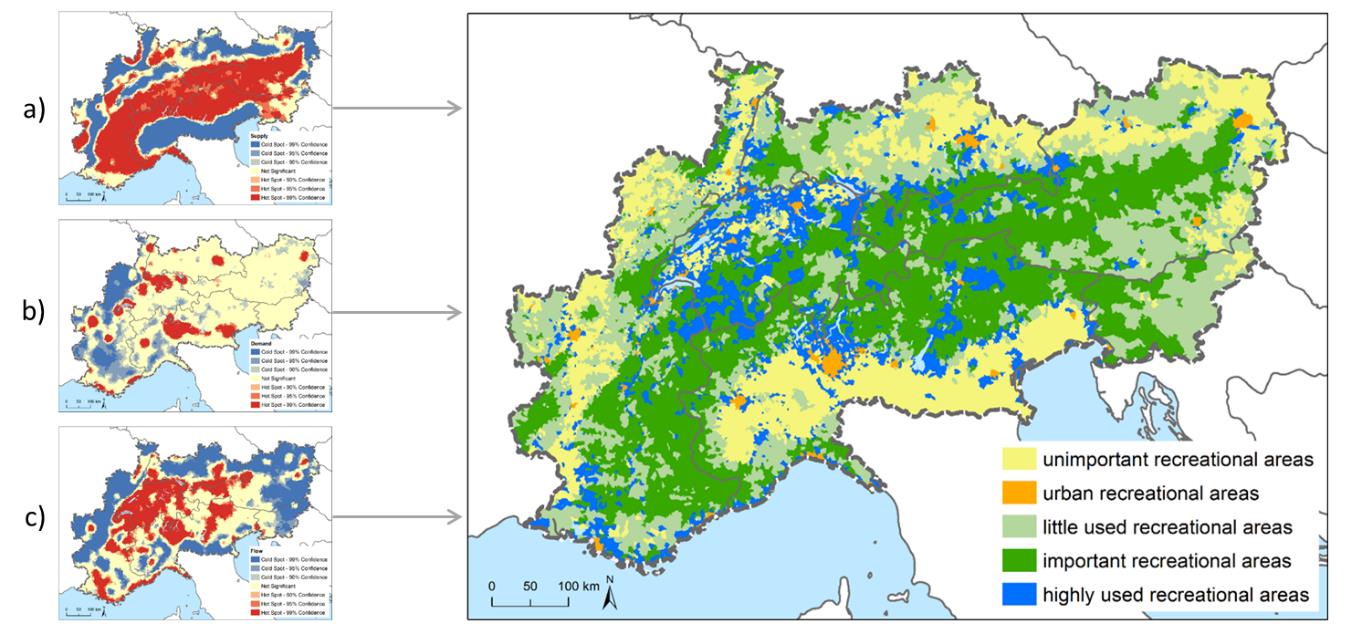Outdoor recreation in the Alps
Mountain Areas provide various possibilities for recreational activities like hiking, mountain biking, climbing or skiing. However, cultural ecosystem services such as outdoor recreation strongly depend on human perception and preferences and are seldom directly linked to ecological processes. Therefore, their mapping remains challenging. To gather and map different aspects of ecosystem services in a quantitative manner, different methods were used within the scope of the AlpES Project. The mapping of the supply is based on multiple landscape indicators like naturalness, relief and diversity in landscape, whereby inaccessible areas were excluded from the study. For the mapping of the demand, population data and the number of over-night stays on municipality level where used, whereas the mapping of the flow rests upon georeferenced pictures of the imagehoster “flickr”.
Fig 1: Corvara in the Dolomites (Italy) is one of the hotspots in the Alps. Picture: Uta Schirpke
Especially mountain areas provide a high recreational potential, however the demand for leisure activities is primarily localized in the urban regions of the Alpine foreland. A high flow occurs mainly in distinct mountain areas (e.g. Valais, Bernese Oberland, Bavarian Alps, Karwendel and Dolomites), around big lakes (Lake Geneva, Lake Garda, Lake Como), in landscapes in the vicinity of cities (e.g. Zurich, Milan, Munich, Vienna) as well as along the Mediterranean coast in France and Italy. Thereby, great seasonal differences are prevailing. Typical tourist destinations in the mountains are usually frequented only in summer and/or winter, whereas regions around big lakes and cities are visited year-round.
FIG2: The left side shows the results of the hotspot analysis for a) supply, b) demand and c) flow. The right side displays the five groups with different relationships between supply, demand and flow emerging from the cluster analysis.
The results of a cluster analysis in combination with a geographically weighted regression model provide important directions for decision-making in landscape planning. An established touristic infrastructure (hiking trails, cable cars, etc.), the proximity to lakes, as well as high differences in relief have a positive influence on the attendances. By contrast, failing tourist management and overuse in these regions might have negative influences on animals and plants as well as on the recreational value itself. Remote areas often provide a high recreational potential, although they are less frequented. In some cases, these areas could be enlivened, which would have positive impacts in the socioeconomic development on the municipalities.
<font 16px/inherit;;inherit;;inherit>Outdoor recreation in the AlpES project</font>
Within the AlpES project the provision dynamics of the ES outdoor recreation activities (including enjoyment and willingness to preserve) in the Alps were assessed by means of the following supply, demand and flow indicators:
- Supply: Recreational offer (index)
- Flow: Visitation rate (index)
- Demand: Beneficiaries (index)
Bibliography
Schirpke, U., Meisch, C., Marsoner, T., & Tappeiner, U. (2017). Revealing spatial and temporal patterns of outdoor recreation in the European Alps and their surroundings. Ecosystem Services. http://www.sciencedirect.com/science/article/pii/S221204161730270X

